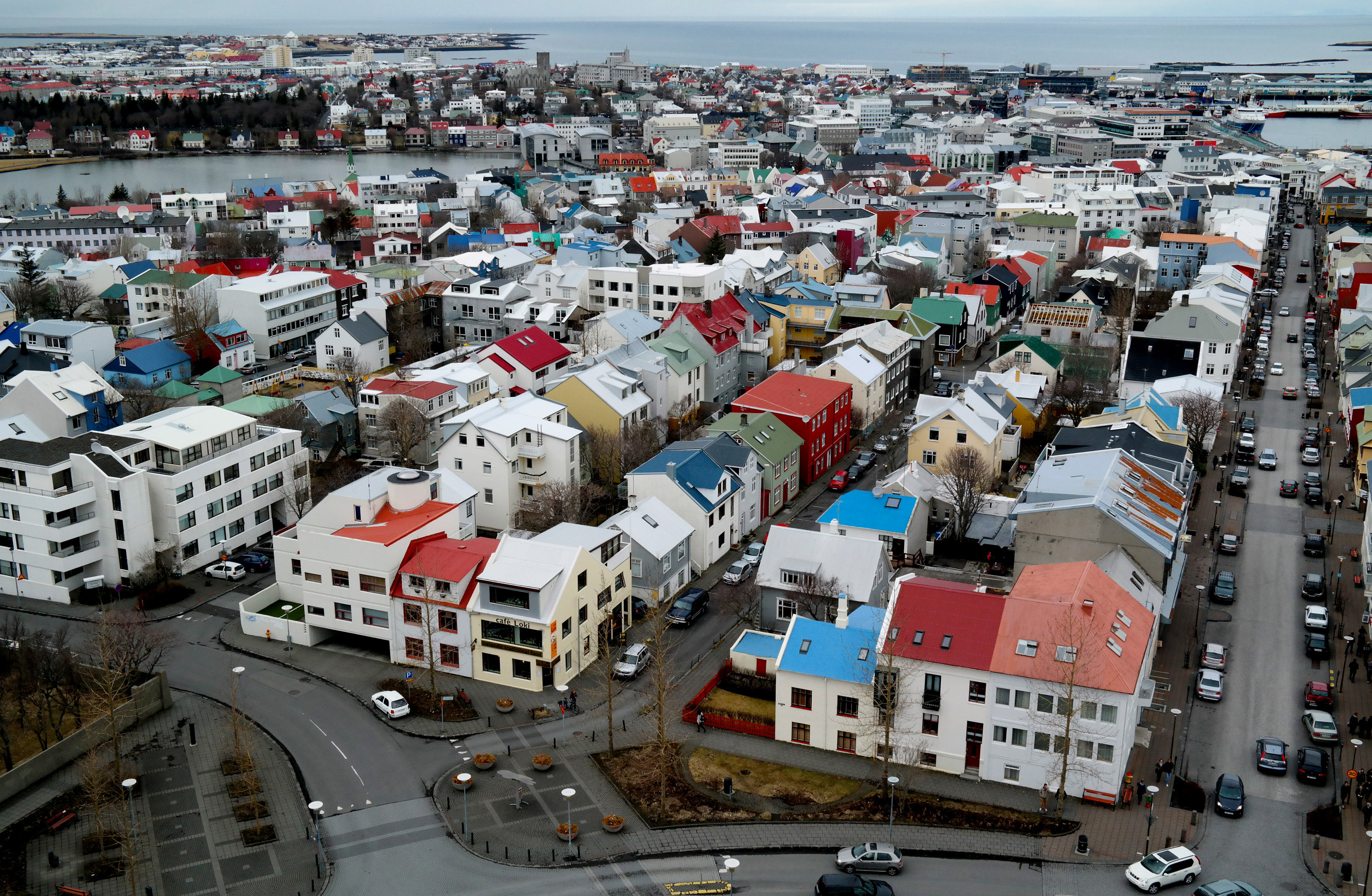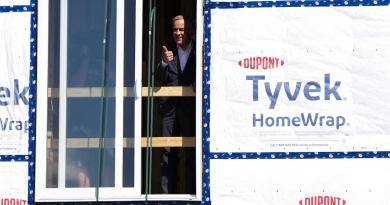10 takeaways from the 2014 Arctic Circle Assembly

REYKJAVIK, Iceland — The second annual Arctic Circle Assembly wrapped up Sunday in this beautiful city on the western shore of a 40,000-square-mile, volcanic rock in the middle of the North Atlantic Ocean, and most of the 1,300 people who came from around the globe to discuss the future of the Arctic began boarding the jet airplanes that would take them home.
The dream of Iceland President Olafur Ragnar Grimsson, the small country’s No. 1 promoter, and Alice Rogoff, publisher of Alaska Dispatch News, the assembly is part economic summit, part environmental conference, and part social gathering that does nothing so much as encourage discussion of Arctic issues.
Here are 10 main takeaways from the discussions at the 2014 assembly:
1. The Big Thaw Has Only Just Begun: Everywhere scientists gathered here there was talk of feedback loops of one sort or another. Melting permafrost is releasing methane gas, a far more potent greenhouse gas than carbon dioxide, to fuel more Arctic warming. Melting sea ice is exposing more ocean to the sun to capture more solar radiation to fuel more Arctic warming. Warming Arctic water is evaporating to form more water vapor, yet another greenhouse gas, to fuel Arctic warming. All of this is now underway, and as British physicist Peter Wadhams observed, there seems no natural mechanism for turning these processes off. There seemed a broad consensus that even if the developed world acts soon to reduce carbon dioxide emissions — an iffy proposition — the Arctic is going to continue warming for decades. Wadhams is predicting the end of the polar ice cap by the summer of 2020.
2. Nobody Really Knows Much About Anything: Along with general agreement on the big picture — more Arctic warming — the scientists were in agreement they don’t know much about the smaller pictures. What will happen to flora and fauna as the Arctic warms? What sort of sea life is living beneath all of that ice now? Is this truly the end of the polar bears or will they, as some believe, be able to adapt to a new, warmer Arctic with less ice? What will the new weather patterns be like? Will the increasing winter ice storms plaguing reindeer herds in Arctic Scandinavia and killing caribou and musk oxen in Alaska continue, get worse, or eventually end? Nobody knows. There are a lot of questions.
3. Some People Would Like To Put the Global-Warming Genie Back In The Bottle: Some of these attending the conference badly want the disappearing Arctic ice back, no matter how unrealistic that might be. And they are adamantly opposed to Arctic development because it might lead to more Arctic warming and more Arctic development. At the end of a panel on “The Arctic, Climate Change, And The Role of Renewable Energy,” one young woman from Canada chastised the audience to think about “why do we need more oil?” The answer seemed pretty simple: To fuel the airplane necessary to fly her back to Canada. But no one said it. The environmental-leaning crowd dominating the audience at the time instead applauded wildly.
4. Change Is Coming: Change is inevitable. Arctic peoples, though they sometimes refuse to notice, have been living with change for hundreds of years — first steel for tools, then firearms, airplanes, outboard motors, aluminum boats, snowmachines, electricity, computers, the Internet, and now cellphones. Edward Itta, the former mayor of the North Slope Borough, knew family members who grew up in the dark living in sod houses with no lights. He said that his father, until the end of his life, would smile every time he flipped a light switch and the house in Barrow brightened. The people of the Arctic have adapted to — and often embraced — a lot of change already. But as many noted, it’s different when you think you are adopting change by choice — even if you’re not really — than if the environment is imposing it upon you.
5. Opportunity Awaits: Wherever there is change, there is opportunity. International financier Scott Minerd of Guggenheim Partners pegged the Arctic as the “greatest opportunity since the end of the Ice Age.” Ohyig Kwon of Daewoo Shipbuilding and Marine Engineering, the Korean industrial giant, rolled out plans for an ice-strengthened Arctic LNG tanker. Some national and international oil companies were developing offshore oil and gas deposits even as the assembly began. Others want in the game. Some countries are exploring mineral development. Conspiracy-minded environmentalists think Greenland is doing the latter in an effort to finally gain full freedom from Denmark, said former Greenland Prime Minister Kuupik Kleist, but the reality is that Greenland just wants jobs. With the Arctic changing in ways that increasingly complicate traditional lifestyles, people need a way to make a living, he said. Kleist sees opportunity. So, too, Alaska state Sen. Lesil McGuire, R-Anchorage, who made an impassioned plea for Alaska Arctic development. She grew up in Alaska, she said, and the trans-Alaska oil pipeline transformed her life for the better. “It brought economic growth and all the freedoms that come with that,” McGuire noted.
6. Cooperation, Cooperation, Cooperation. Cooperation was the most over-used word at the assembly: Even the Russians were talking cooperation, though not as much as the countries outside the Arctic. The farther from the Arctic a country was situated — countries including France, Italy, Korea, Singapore and China — the more it talked about the need for cooperation in Arctic science, Arctic shipping and Arctic development. Arctic cooperation to date has been simple because so little in the way of business has happened in the Arctic. Expect the cooperation to get a lot more difficult as national business interests take over. The Russians were doing seismic oil exploration just across the Bering Strait from Alaska this summer. They weren’t about to ask for input from Americans who have piled on rules and restrictions that make life more complicated for companies working on the U.S. side of that narrow strait.
7. Sustainability: This was the second-most used word at the conference. Everyone was all about keeping anything that happened in the Arctic sustainable. What exactly that means is unclear, given that one of the inevitabilities of life is change. Businesses come and go. The solar energy business designed to last a lifetime might die tomorrow while the mine with a limited life keeps on plugging along, and providing jobs, for decades. But the word sustainable sounds nice, and sustainability is a wonderful thing when it works. Iceland has tapped the ground here for thermal energy that has provided sustainable heat for houses and energy for electricity for decades. It is indeed impressive.
8. Everybody Wants To Sell Something: A lot of the non-Arctic countries talking up Arctic cooperation seemed mainly interested in selling things: Arctic science, Arctic oil spill cleanup technology, Arctic ships, Arctic tourism and more. The French rolled out a promotional video advertising their “eco-friendly” luxury cruises through the Arctic. Mining interests tried to make nice with environmentalists who have fought mining almost everywhere on the globe. Scientists from almost every country went trolling for funding for pet science projects that keep them employed. As with so many things in the world, a part of the conference simply came down to money, money, money.
9. Fear: The World Economic Forum and others claim there are 4 million people living in the Arctic, but that is a liberally created figure. It appears to include a lot of people living close to the Arctic, like most Alaskans. The people really living in the Arctic — Sen. Lisa Murkowski, R-Alaska, estimated there are about 50,000 in Alaska — know they are few in number. Okalik Eegeesiak, chair of the Inuit Circumpolar Council, asked the indigenous residents of the region attending the assembly to stand during a program on “Indigenous Voices from the Arctic.” A mere handful rose in a room of hundreds. “These are the people you talk to when you come up,” she said. “We ask that you consult with us before you try to reinvent the Arctic.” Arctic people don’t go to the cities of the world and tell folks there how to live, Eegeesiak observed, and the city folk shouldn’t be coming north to tell Arctic people how to live. There is a very real angst among some Native peoples that they could be overrun like the Sioux Indians of the American Great Plains.
10. Talk, Talk And More Talk: Despite all the fear over Arctic development, most of what is going on now remains far more talk than reality. The reality is that the Arctic presents a hostile environment in which to live and work, and that is not going to change anytime soon. The city that hosted the assembly thrives in large part because it is a relatively warm place, despite its location just below the Arctic Circle. The high temperature here on Sunday was 46 degrees — about 20 degrees warmer than Murmansk in the Russian Arctic and Nuuk in the Greenland Arctic, each 28 degrees, and a staggering 59 degrees warmer than Barrow in the American Arctic at 13 below zero. The Vikings who discovered this island more than 1,000 years ago recognized the hospitality of the climate. Humans generally favor warmer climes than the Arctic. There is a reason there are only six cities with more than 250,000 people north of 61 degrees latitude. Anchorage is one of them. The other five — Surgut, Petrozavodsk, Yakutsk, Arkhangelsk and Murmansk — are in Russia, and date back to the Czars or Soviets who fueled their development. Only one of these cities — Murmansk — is north of the Arctic Circle and thus actually in the Arctic. Murmansk was the last city created by the Romanov empire, but it flourished under the control of the former Soviet Union. Murmansk was the home base for the Soviet nuclear submarine fleet. The Soviets sent people to Murmansk to live. Today, notes the Moscow Times, “Murmansk suffers from post-Soviet depopulation. Since the early 1990s, Murmansk’s population has declined steadily, decreasing from a city of almost half a million to one with just over 300,000 residents.” The Arctic is, quite simply, not a place a lot of people want to live. As Eegeesiak observed, “the climate is not for everyone.” Even in a warmer Arctic, that isn’t going to change enough to make a difference.
Contact Craig Medred at craig@alaskadispatch.com
Other coverage of Arctic Circle 2014:
Arctic Circle – A tale of two Arctics, Blog by Mia Bennett, Cryopolitics
Expert predicts ice-free Arctic by 2020 as UN releases climate report, Alaska Dispatch
From Arctic Circle 2013-2014, a big drop in the price of oil, Blog by Mia Bennett, Cryopolitics
The Arctic Circle – Make way for corporate development, Blog by Mia Bennett
Iceland conference draws on hopes, concerns for changing Arctic, Alaska Dispatch



